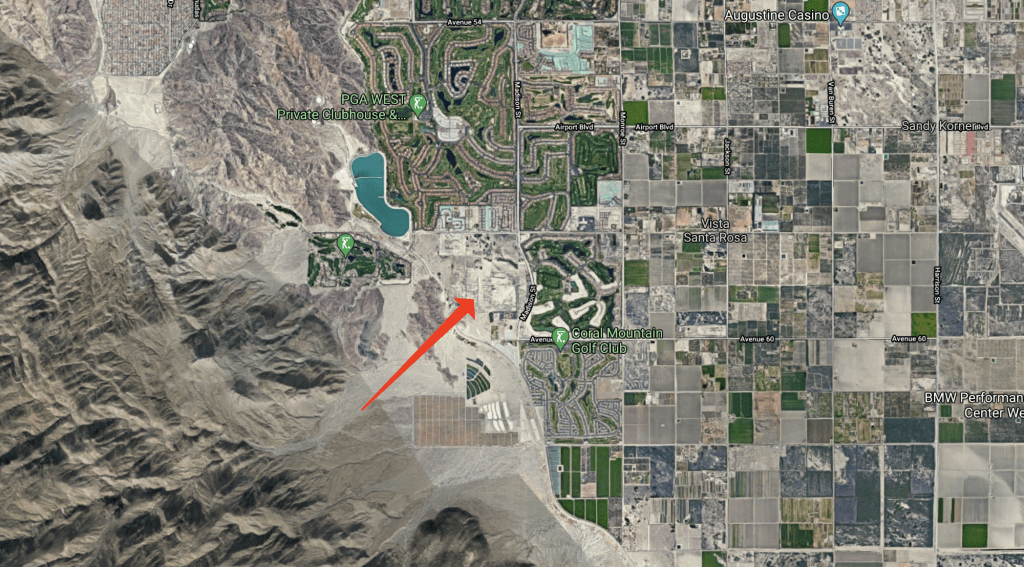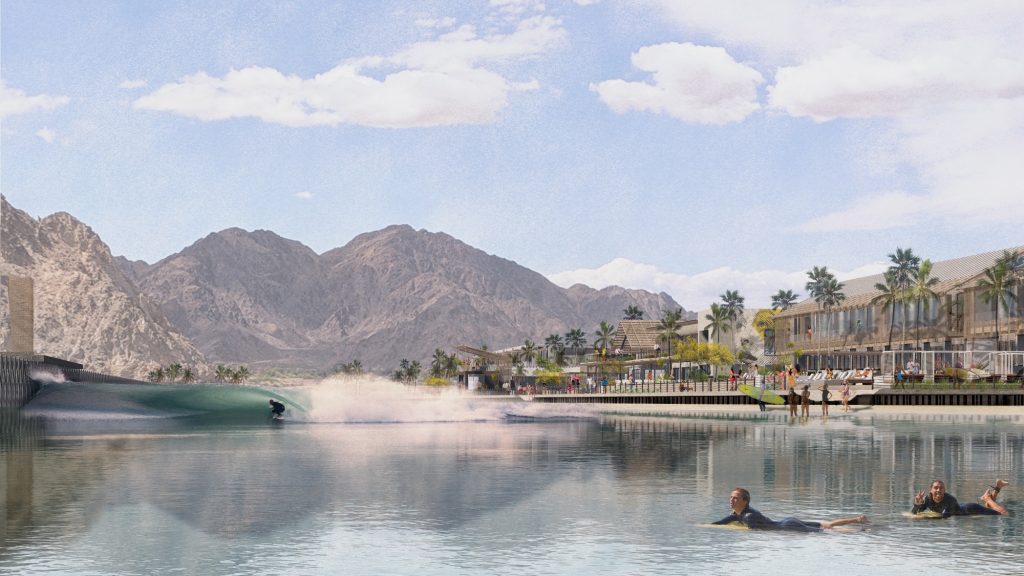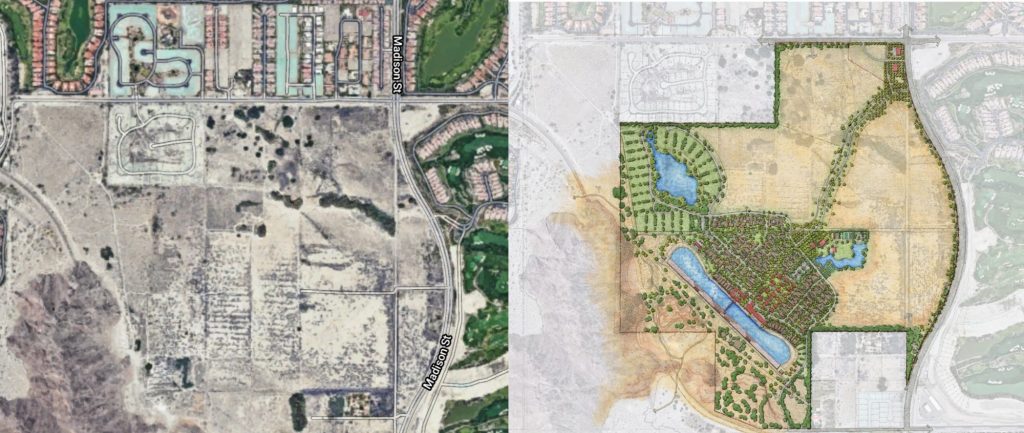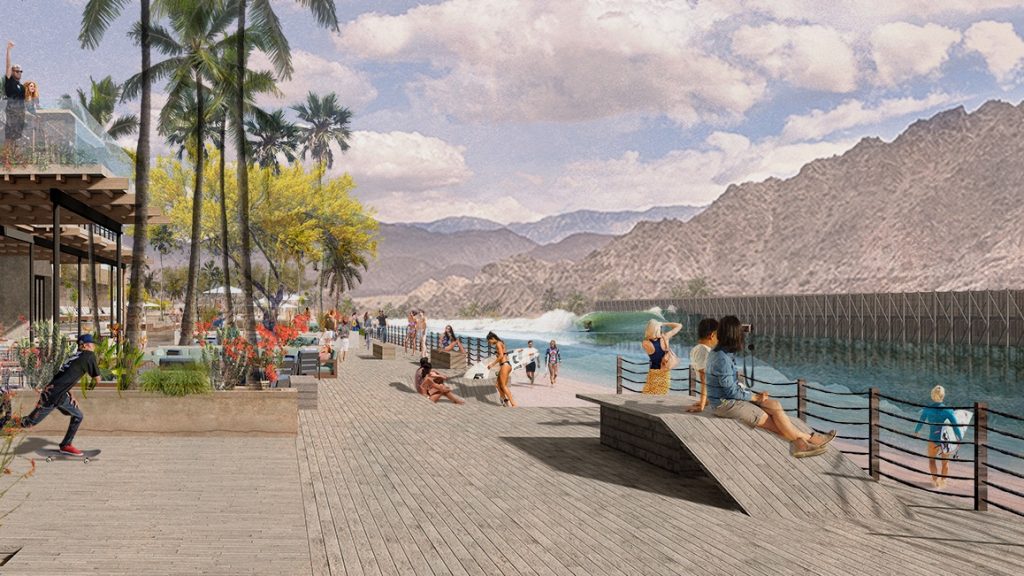Coral Mountain meets resistance from neighbors

As the Coral Mountain Resort private development and its associated wave pool in La Quinta, Coachella Valley, California comes closer to reality, local opposition arises.
While wave pool developers have their wave heights, length of ride, frequency of swells, and hollowness, all dialed into their pools plans, there’s one aspect, a simpler choice, which can cause everything to grind to a halt.
The resident community can band together in support or opposition. Now I’d wager that most surfers wouldn’t say no to having a wave pool session, but would you want one in your neighborhood?
Concern and resistance to new building projects are universal. Sometimes all parties are happy with proposals and plans are passed at warp speed. Other times it’s a full-blown blockade involving chains, padlocks, superglue and a vast number of drums and dancing mascots.
But when it comes to private golf communities protesting against a planned private wave pool community is it a case of throwing stones in glass houses? Very expensive glass houses that is. Or maybe it’s more a case of “After I’ve built my private community, you can’t build yours.”
So yes, some residents of the established exclusive communities in La Quinta, in the Coachella Valley of California, aren’t too happy about the development plans for the Coral Mountain Resort and their potentially, soon-to-be, aquatically inclined neighbors. Light and noise pollution, as well as traffic and water usage, top their concerns.

“This is just the wrong place for this,” Kelly Welton told KESQ-TV. “This doesn’t belong in the middle of a residential, quiet area.”
The La Quinta Residents for Responsible Development says it has gathered hundreds of signatures from nearby residents who are against the surf park.
The private resort and residential community plans to include a wave pool that covers close to 17 acres, 150 hotel rooms, 600 vacation rentals and additional exclusive residences and recreational facilities. This is intended to be built on 400 acres of undeveloped land that was recently rezoned from low-density residential to commercial/tourism.
The development is expected to provide up to $2.2 million in revenue for the city every year, but residents are concerned it will affect their quality of life.

“They want to use 18 million gallons of our aquifer water that we need to drink with, to put in this pool,” Derek Wong, a member of the group said. “That’s just to fill it.”
But it’s worth noting that on a typical winter day the SilverRock golf course in La Quinta needs around 500,000 gallons of water. On a cool day it’s likely to use 400,000 gallons and on hot, windy days it could be up to 600,000 gallons. And this is with a new computer system that’s pumping out, on average, 25% less water than the course was using prior to a computer ‘smart systems’ upgrade.
According to an LA Times article, the Coachella Valley relies on an aquifer so large that when the U.S. Geological Survey tried to measure it “scientists got to 12 trillion gallons ‘and then they stopped counting,’ Coachella Valley Water District (CVWD) spokeswoman Heather Engel said.”
With so much water on hand for locals, it’s only in the past decade or so that businesses with high water consumption have looked at using less and cutting costs. Californian state law bans water agencies from charging more than the cost of water production, meaning prices to the end-user stay low. The CVWD’s base rate is about US$1.12 for 748 gallons of domestic water. While the water department in Los Angeles charges US$5.06 for the same amount.
Regional golf courses account for 17% of water usage in the Coachella Valley.

John Gamlin, president of Coral Mountain Wave Development, says all concerns have been addressed in an independent environmental impact report draft, including the issues of water usage and noise mitigation.
“We’re gonna prove out that this may not be what people think it is,” said Gamlin. “You can drive by this community with the wave basin operating and you wouldn’t know it was operating. Traffic studies show no nearby intersections will need to be immediately improved as a result of this project, with no longer waits at traffic lights projected.
“I haven’t found anything that I don’t think we can’t address in a way that would be acceptable to any neighbor,” he added. “We’re the private country club equivalent of a wave pool, instead of golf.”
And it’s this last point that seems to be the driving force behind the development. “Younger people, millennials and Generation Z are not playing golf,” said Gamlin. “So there’s this sea change going on in demographics.”

In June 2021, La Quinta city published a drafted Environmental Impact Report. It says the residents’ concerns have been accounted for. The report says traffic intersections won’t be majorly affected, noise impact will be “less than significant” and the project comes in under the Coachella Valley Water District’s yearly limit for water usage.
At this stage, the local council has found little in the way of negative effects for the development.
The final day for locals to lodge comments or complaints about the development was on August 6th, 2021. And the local planning commission is expected to examine the project in October 2021, with the developers hoping for approval by the end of the year.
Related Coverage
